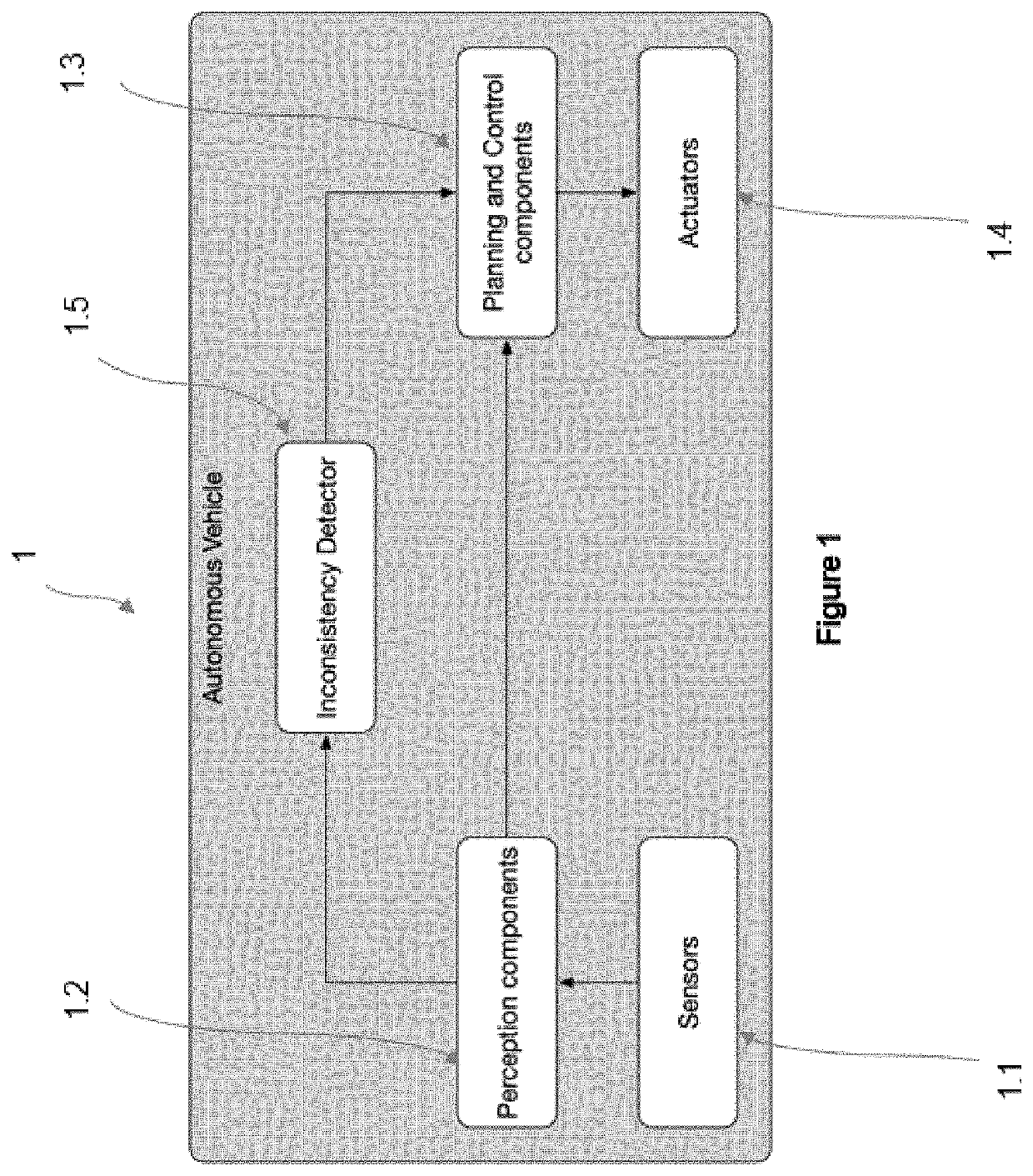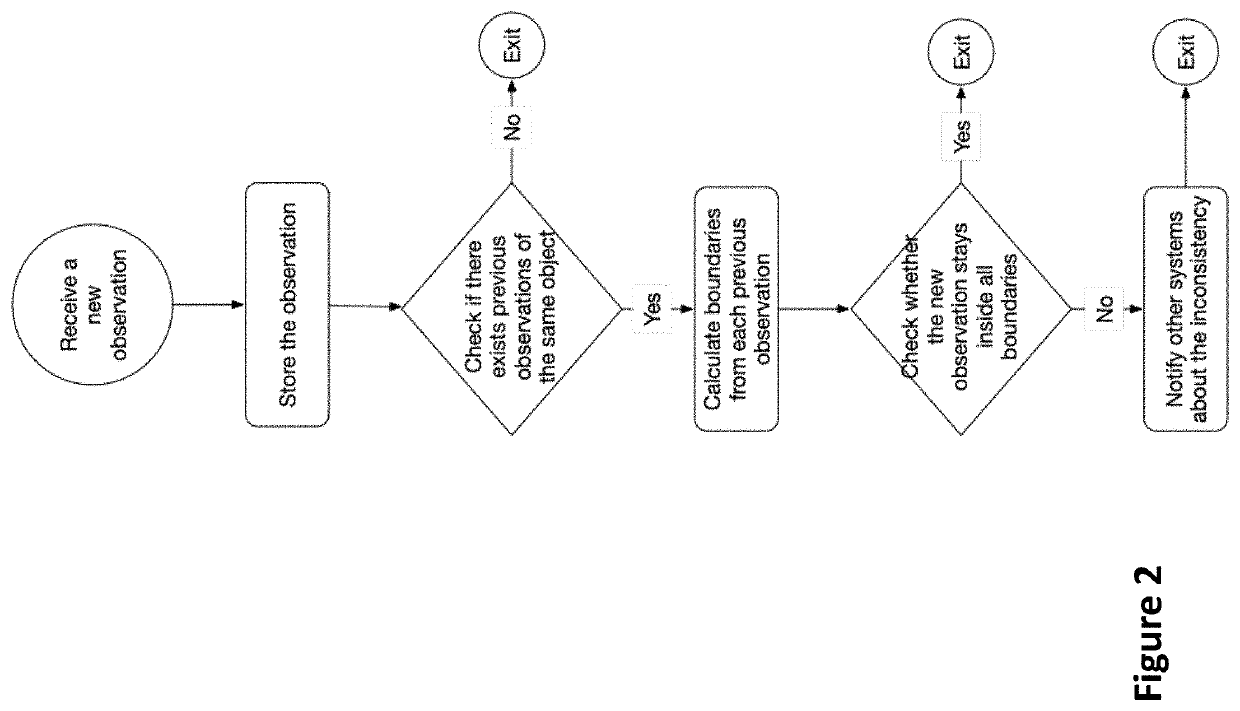Method for detecting inconsistencies in the outputs of perception systems of autonomous vehicles
- Summary
- Abstract
- Description
- Claims
- Application Information
AI Technical Summary
Problems solved by technology
Method used
Image
Examples
Example
DETAILED DESCRIPTION OF THE DRAWINGS
[0080]FIG. 1 is a schematic flow chart of the inconsistency detector system of the present invention in an autonomous vehicle system (1). The information from the environment measured by sensors (1.1) is directed to the perception systems (1.2) of the automated vehicle. Examples of sensors include:[0081]Cameras,[0082]Light Detection And Ranging, also referred to as LiDAR,[0083]Radars, or[0084]Global Navigation Satellite System positioning, also referred to as GNSS positioning.
[0085]The perception systems (1.2) of the vehicle interpret the raw information from the sensors (1.2) and extract observations on the scene. Such observations include one or more of the existing elements, their position, or environmental conditions.
[0086]The vehicle central board (1.3) is capable of performing several vehicle processes, such as vehicle control and decision making units that perform tasks such as path planning. The outputs of the vehicle central board (1.3) a...
PUM
 Login to View More
Login to View More Abstract
Description
Claims
Application Information
 Login to View More
Login to View More - R&D
- Intellectual Property
- Life Sciences
- Materials
- Tech Scout
- Unparalleled Data Quality
- Higher Quality Content
- 60% Fewer Hallucinations
Browse by: Latest US Patents, China's latest patents, Technical Efficacy Thesaurus, Application Domain, Technology Topic, Popular Technical Reports.
© 2025 PatSnap. All rights reserved.Legal|Privacy policy|Modern Slavery Act Transparency Statement|Sitemap|About US| Contact US: help@patsnap.com


